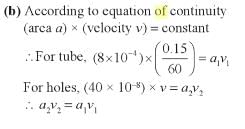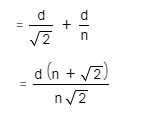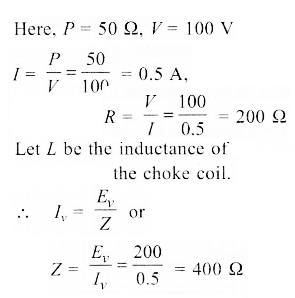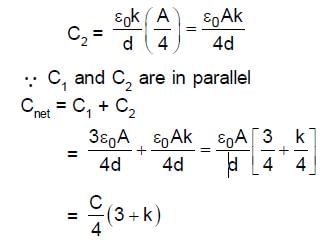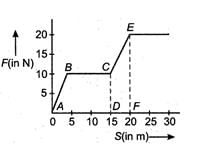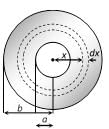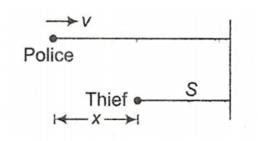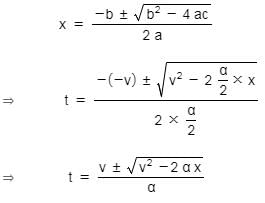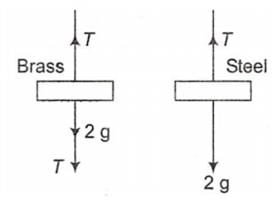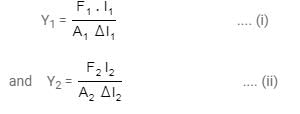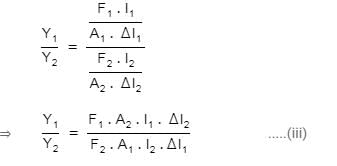JIPMER Previous Paper 2012 - NEET MCQ
30 Questions MCQ Test - JIPMER Previous Paper 2012
The cylindrical tube of a spray pump has a cross-section of 8 cm2, one end of which has 40 fine holes each of area 10-8 m2. If the liquid flows inside the tube with a speed of 0.15 m min-1, the speed with which the liquid is ejected through the holes is
Which one of the following graph represents the variation of maximum kinetic energy (Ek ) of the emitted electrons with frequency v in photoelectric effect correctly?
A vessel of height 2d is half filled with a liquid of refractive index √2 and the other half with a liquid of refractive index n (the given liquids are immiscible). Then, the apparent depth of the inner surface of the bottom of the vessel (neglecting the thickness of the bottom of the vessel) will be
A shell of mass 20 kg at rest explodes into two fragments whose masses are in the ratio 2 : 3. The smaller fragment moves with a velocity of 6 m/s. The kinetic energy of the larger fragment is
An electric bulb has a rated power of 50 W at 100 V. If it is used on an AC source 200 V, 50 Hz, a choke has to be used in series with it. This choke should have an inductance of
In Young’s double slit experiment with sodium vapour lamp of wavelength 589 nm and the slits 0.589 mm apart, the half angular width of the central maximum is
A parallel plate capacitor with air as the dielectric has capacitance C. A slab of dielectric constant K and having the same thickness as the separation between the plates is introduced so as to fill one-fourth of the capacitor as shown in the figure. The new capacitance will be
Three concurrent coplanar forces 1 N, 2 N and 3 N acting along different directions on a body
The work done by a force acting on a body is as shown in the graph. The total work done in covering an initial distance of 20 m is
Horizontal tube of non-uniform cross-section has radii of 0.1 m and 0.05 m respectively at M and N. For a streamline flow of liquid, the rate of liquid flow is

A coil of n number of turns is wound tightly in the form of a spiral with inner and outer radii a and b respectively. When a current of strength I is passed through the coil, the magnetic field at its centre is
A certain vector in the xy-plane has an x-component of 4 m and a y-component of 10 m. It is then rotated in the xy-plane sothatits x-component is doubled. Then, its new y-component is (approximately)
A police party is moving in a jeep at a constant speed v. They saw a thief at a distance x on a motorcycle which is at rest. The moment the police saw the thief, the thief started at constant acceleration a Which of the following relations is true if the police is able to catch the thief?
If two soap bubbles of different radii are connected by a tube, then
The thermo emf of a hypothetical thermocouple varies with the temperature e of hot junction as E = aθ + bθ2 in volts, where the ratio a / b is 700°C. If the cold junction is kept at O°C, then the neutral, temperature is
A launching vehicle carrying an artificial’ satellite of mass m is set for launch on the surface of the earth of mass M and radius R. If the satellite is intended to move in a circular orbit of radius 7 R, the minimum energy required to be spent by the launching vehicle onthe satellite is (Gravitational constant = G)
If the ratio of lengths, radii and Young’s modulus of steel and brass wires shown in the figure are a, b and e respectively, the ratiobetween the increase in lengths of brass and steel wires would be
A soap bubble of radius r is blown up to form a bubble of radius 2 r under isothermal conditions. If T is the surface tension of soap solution, the energy spent in the blowing
A current of 1.6 A is passed through solution of CuSO4. How many Cu++ ions are liberated in one minute? (Electronic charge =1.6 x 10-19 C)
In an L-C-R circuit inductance is changed from L to L/2. To keep the same resonance frequency, C should be changed to
The sound waves after. being converted into electrical waves are not transmitted as such because
The tip of a needle does not give a sharp image on a screen. This is due to
An engine moving towards a wall with a velocity 50 m/s emits a note of 1.2 kHz. Speed of sound in air is 350 m/s. The frequency of the note after reflection from the wall as heard by the driver of the engine is
The surface temperature of the sun which has maximum energy emission at 500 nm is 6000 K. The temperature of a star which has maximum energy emission at 400 nm will be
The truth table given below is for (A and B are the inputs, Y is the output)
Two rectangular blocks A and B of masses 2 kg and 3 kg respectively are connected by a spring of spring constant 10.8 Nm-1 and are placed on a frictionless horizontal surface. The block A was given an ‘initial velocity of 0.15 ms-1 in the direction shown in the figure. The maximum compression of the spring during the motion is
0.1 m3 of water at 80°C is mixed with 0.3 m3 of water at 60°C. The final temperature of the mixture is
y = 3 sin π(t/2 -x/4) represents an equation of a progressive wave, where t is in second and x is in metre. The distance travelled by the wave in 5 s is


